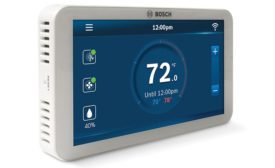Thermostats
The Emergence of Demand Response Programs in HVAC
Thermostats are leading the charge as an economical response option for consumers
Read More
Easy Connections, Size Highlight Residential Controls Offerings
Jackson Systems LLC, Nordic Technology Ltd., and Uponor Inc. take home the hardware
Read More
Homeowners Are Ready for Smart Thermostats
Research shows there’s a large demand for connected devices
Read More
A Contractor’s Guide to Home Automation
HVACR contractors contemplate the impact of new, smart technologies
Read More
New Home Automation Equipment a Game-changer for Contractors
Connected technologies yet another arrow in contractors’ quivers
Read More
Copyright ©2024. All Rights Reserved BNP Media.
Design, CMS, Hosting & Web Development :: ePublishing












